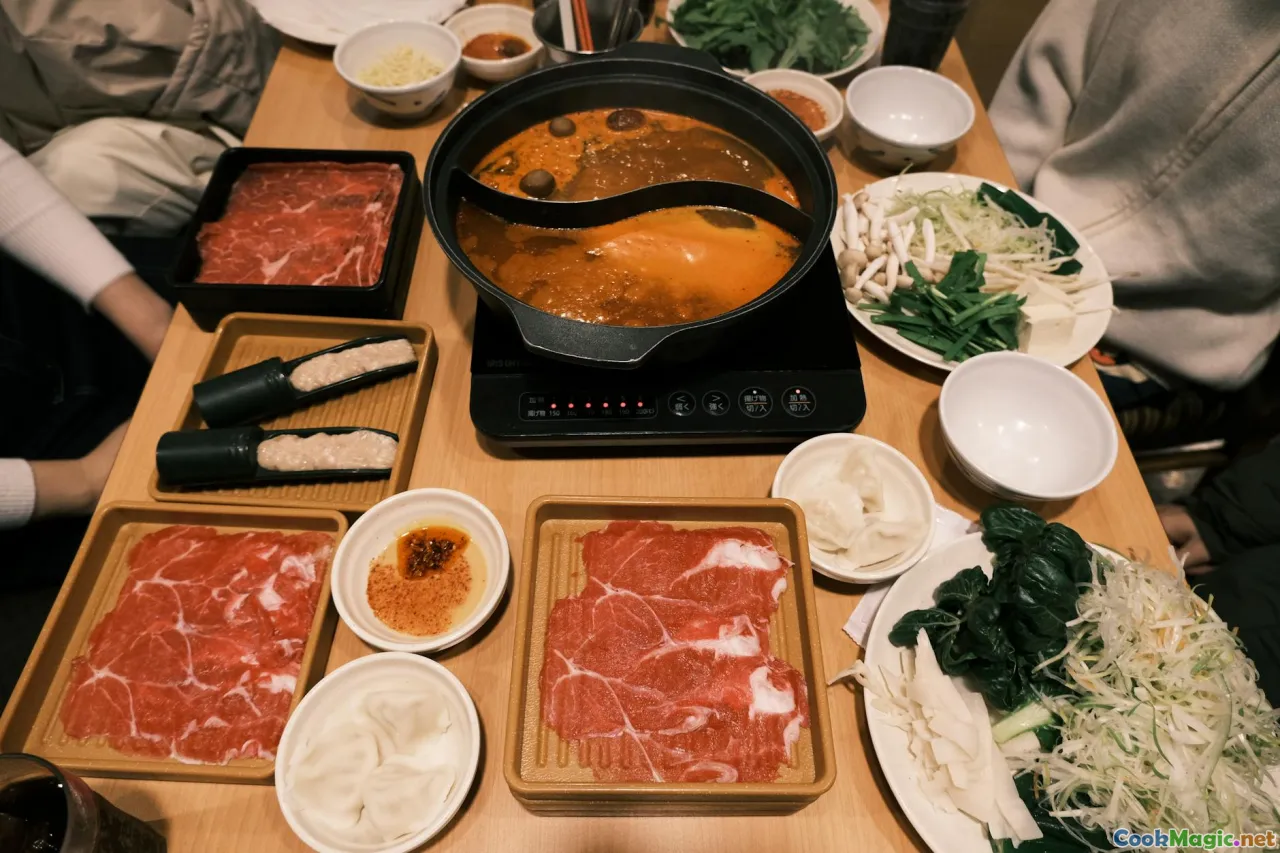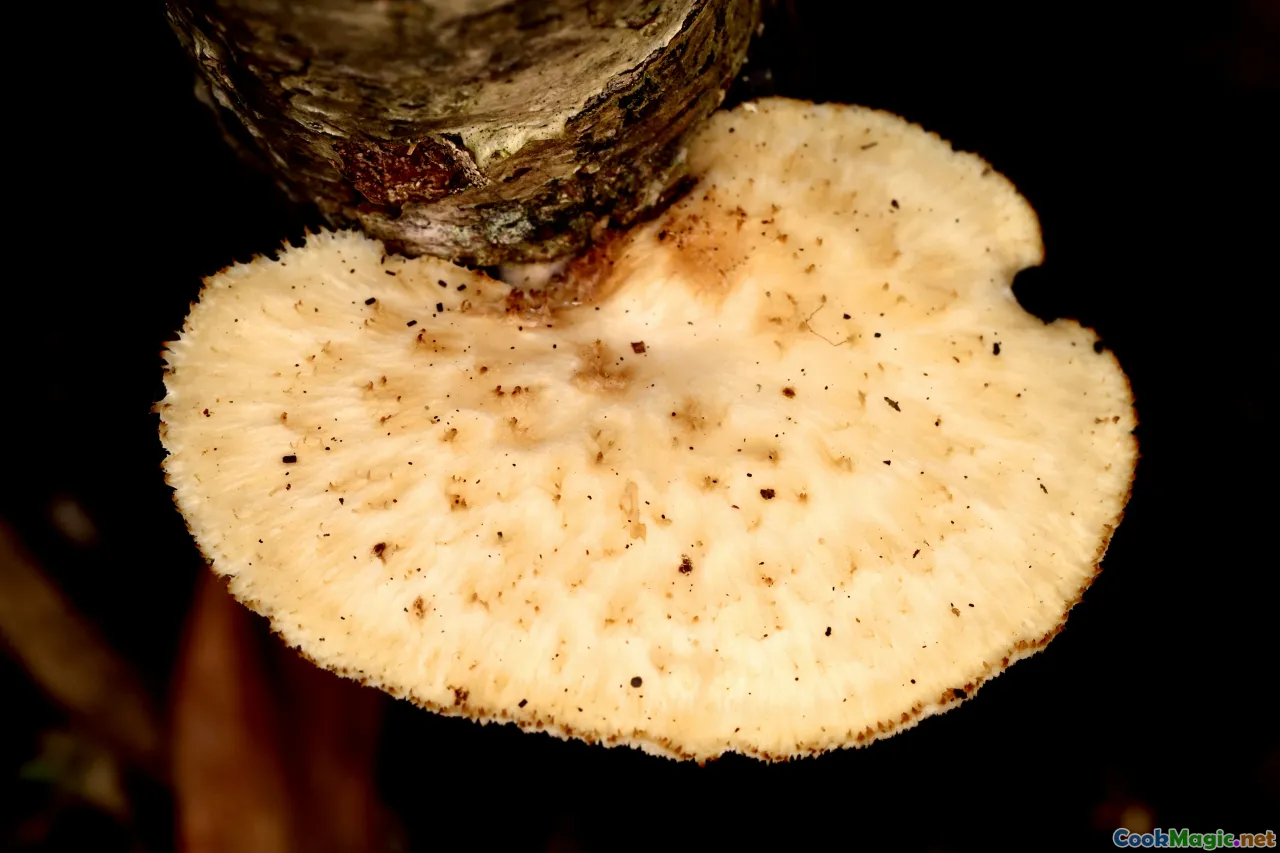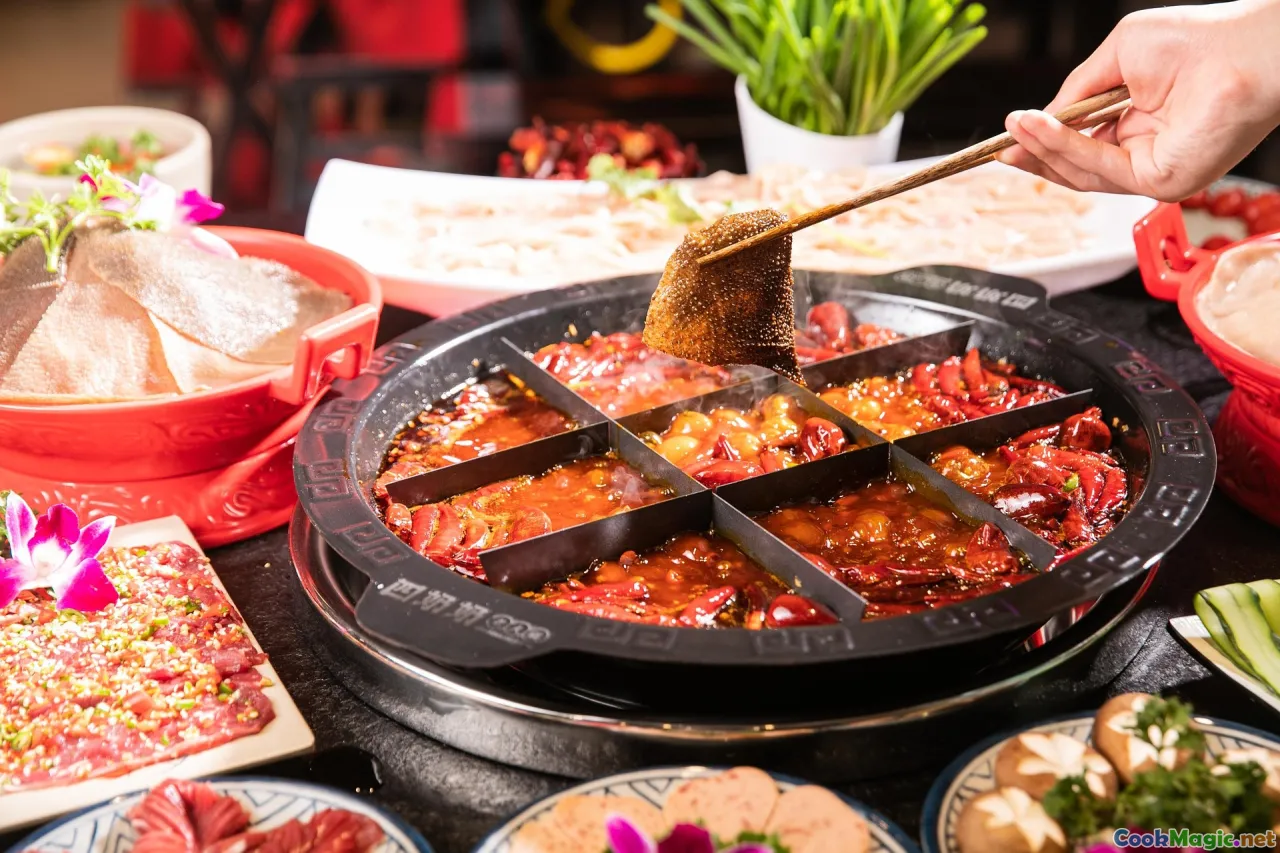
Papuanischer Wildpilz-Topf: Regenwald-Umami in einer Schüssel
(Papuan Wild Mushroom Hotpot: Rainforest Umami in a Bowl)
(0 Bewertungen)0
18
August 24, 2025
Problem melden
Zutaten
-
300 grams Wilde Pilzmischung mit Shiitake, Austernpilzen, Steinpilzen und Morcheln
(Use a diverse mix for complex flavor)
-
2 pieces Frische Vogelaugen-Chili
(Adjust for spice preference)
-
25 grams Ingwer
(Fein geschnitten)
-
2 stalks Zitronengras
(Bruised, sliced into large pieces)
-
4 leaves Kaffir-Limettenblätter
(Zerzupfen, um Aroma freizusetzen)
-
10 grams Galanga
(Dünn geschnitten)
-
80 grams Bananenblüte
(Sliced, soaked to reduce bitterness)
-
120 grams Tempeh
(In Würfel schneiden)
-
2 stalks Frühlingszwiebeln
(In Scheiben geschnitten zur Garnierung)
-
15 grams Korianderblätter
(Gehackt, zum Garnieren)
-
20 grams Tamarindenpüree
(Soaked in 100ml hot water; for sourness)
-
1 tsp Salz
-
1 tbsp Kokoszucker
(Kann durch braunen Zucker ersetzt werden)
-
2 tbsp Erdnussöl
(For sautéing ingredients)
-
1.2 liters Gemüsebrühe
(Ungesalzen)
-
1 tbsp Limettensaft
(Frisch gepresst)
(Use a diverse mix for complex flavor)
(Adjust for spice preference)
(Fein geschnitten)
(Bruised, sliced into large pieces)
(Zerzupfen, um Aroma freizusetzen)
(Dünn geschnitten)
(Sliced, soaked to reduce bitterness)
(In Würfel schneiden)
(In Scheiben geschnitten zur Garnierung)
(Gehackt, zum Garnieren)
(Soaked in 100ml hot water; for sourness)
(Kann durch braunen Zucker ersetzt werden)
(For sautéing ingredients)
(Ungesalzen)
(Frisch gepresst)
Nährwerte
- Portionen: 4
- Portionsgröße: Eine große Schüssel (350 g)
- Calories: 210 kcal
- Carbohydrates: 26 g
- Protein: 8 g
- Fat: 8 g
- Fiber: 6 g
- Sugar: 7 g
- Sodium: 680 mg
- Cholesterol: 0 mg
- Calcium: 58 mg
- Iron: 2.2 mg
Anweisungen
-
1 - Clean and Prepare Mushrooms:
Wipe wild mushrooms with a damp cloth to remove dirt. Slice thick mushrooms into bite-size pieces; leave delicate ones whole.
-
2 - Prepare Aromatics and Vegetables:
Slice ginger, galangal, lemongrass, and spring onions. Tear kaffir lime leaves for maximum aroma. Cut tempeh into cubes and set aside banana blossom soaking.
-
3 - Sauté Aromatics:
Heat peanut oil in a large pot over medium-high heat. Sauté ginger, galangal, lemongrass, and lime leaves until fragrant, about 2-3 minutes.
-
4 - Add Mushrooms and Tempeh:
Add mushrooms and tempeh to the aromatics. Stir-fry gently; ensure mushrooms release aroma but do not brown too much.
-
5 - Simmer the Hotpot Base:
Pour in vegetable broth. Add banana blossom, soaked tamarind water, coconut sugar, and salt. Bring to a boil, then simmer for 15 minutes with lid on.
-
6 - Finish and Adjust Flavors:
Remove from heat. Add lime juice, sliced chilies, and half of the spring onion. Taste and adjust salt or sourness as needed.
-
7 - Serve Garnished:
Ladle hotpot into large bowls. Garnish with fresh coriander, banana blossom (if reserved), and spring onions. Serve piping hot.
Wipe wild mushrooms with a damp cloth to remove dirt. Slice thick mushrooms into bite-size pieces; leave delicate ones whole.
Slice ginger, galangal, lemongrass, and spring onions. Tear kaffir lime leaves for maximum aroma. Cut tempeh into cubes and set aside banana blossom soaking.
Heat peanut oil in a large pot over medium-high heat. Sauté ginger, galangal, lemongrass, and lime leaves until fragrant, about 2-3 minutes.
Add mushrooms and tempeh to the aromatics. Stir-fry gently; ensure mushrooms release aroma but do not brown too much.
Pour in vegetable broth. Add banana blossom, soaked tamarind water, coconut sugar, and salt. Bring to a boil, then simmer for 15 minutes with lid on.
Remove from heat. Add lime juice, sliced chilies, and half of the spring onion. Taste and adjust salt or sourness as needed.
Ladle hotpot into large bowls. Garnish with fresh coriander, banana blossom (if reserved), and spring onions. Serve piping hot.
Mehr über: Papuanischer Wildpilz-Topf: Regenwald-Umami in einer Schüssel
Papuan Wild Mushroom Hotpot: A Culinary Journey into Indonesia’s Rainforest
Papua, often celebrated for its mountains, dense jungle, and extraordinary biodiversity, is home to a variety of unusual edible plants thanks to its unique highland climate and rich soil. While the broader Indonesian archipelago can boast no shortage of stews and broths, a rainforest-inspired hotpot using local mushrooms beautifully represents how indigenous communities celebrate abundance after the harvest.
Deeply Rooted Flavors and Cultural Context
Hotpots in general are a symbol of communal gathering across the world, from Japanese shabu shabu to Mongolian hotpots and Sumatran sotos. In Papua—with its tribal gatherings and strong village kinship—the cooking pot brings people together, allowing each member to add foraged items depending on the season or spirit of the occasion. The inclusion of mushrooms isn’t just for nutrition; it’s a celebration of the nurturing cycle of forests, as mushrooms signal health in nature's soil.
In remote villages, a Papuan cook may slip tropical spices (ginger, lemongrass, galangal), cleanse the broth with acidic notes from tamarind or sun-warmed citrus, and, for good measure, layer in garden protein like tempeh or native ferns. The banana blossom, not always available outside Southeast Asia, adds a delicate, slightly bitter note and a surprisingly meaty texture that’s both hearty and good for you when sliced after soaking.
What Sets It Apart
The complexity of taste in this dish comes not just from the umami-laden mushrooms, but from the aromatic bouquet of tropical greens. Ginger and lemongrass do not merely bring heat—they cleanse with freshness. Kaffir lime leaves and galangal drive deeply citrusy-pine undertones rarely found together in Western broths. Adding tamarind, balanced by the mellow sweetness of coconut sugar, delivers bright highs yet grounds the pot with rounded, earthy depth.
Whereas most ordinary mushroom soups or hotpots rely on cream or butter (especially in Western traditions), this distinctly Indonesian hotpot is vegan-friendly and “low-impact”—bolstering flavor through natural caramelization (thanks to a hot sauté), knowledge of foraging, and fermentation from tempeh.
Cooking and Serving Tips
- A mix of wild mushrooms is crucial: You need chewy, spongy, woodsy, and mild types to recreate a true fate of the forest floor. If your market doesn't offer Indonesian or Papuan mushrooms, shiitake, enoki, oyster, and even cremini can supply variety.
- Banana blossom needs a good soak to leech out bitterness—save a few thin slices for garnish to get both color and crunch.
- Tamarind pulp is commonly available from Asian grocers. Always dissolve in hot water and strain to avoid tough seeds or strings.
- Taste before finishing: The acid-sweet balance is key. Adjust at the end with more lime or extra sugar, but let those rich brothy mushrooms guide your saltiness.
- Chiles are optional. Bird’s eye chilis are traditional, but add as much or little heat as your palate desires.
Health & Sustainability
Low in calories and cholesterol-free, this hotpot features a dense fiber profile, which speaks to many conscious diets of rainforest peoples—who routinely rely more on roots, berries, and legumes than livestock proteins. Thanks to its high mushroom, tempeh, and herb content, you get gut-nourishing prebiotics, essential amino acids, and enough minerals to keep stamina strong on treks or dances into the night.
My Thoughts and Personal Connection
What I love about the Papuan Wild Mushroom Hotpot is that it champion’s Papua’s little-known culinary sophistication. It’s as nourishing for the spirit as for the body. There are few dishes as dynamic for showing off unusual vegetables—swap in sweet potato leaves if you find them, or other local roots if banana blossom isn’t available. The hotpot process itself, filling a kitchen with forest aroma, brings a sense of ritual. In this way, sharing the bowl isn’t just dinner: it’s participation in a very old, very nourishing communal tradition—honoring Papua’s living rainforest in every bite.




















